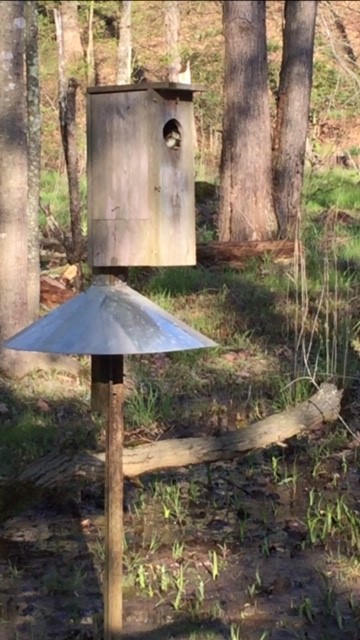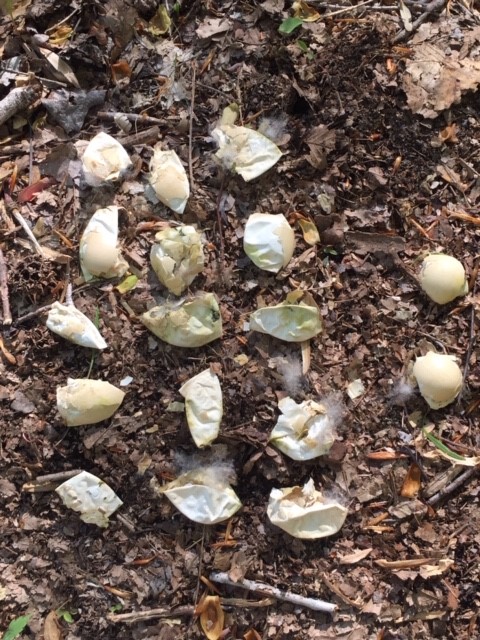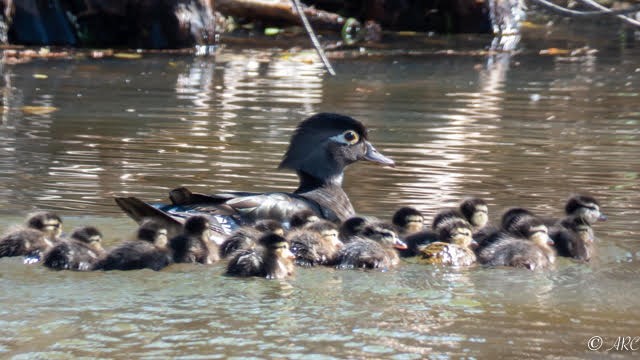This is a follow-up to an earlier blog post. Read it here.
During this exciting spring nesting season, ACLT’s wood duck family has been growing steadily. The numbers are in with a total of 53 eggs laid and 52 hatched from four boxes in Horse Swamp and Parkers Creek. This near-perfect hatch rate is a great sign for the local wood duck population.
Earlier in the season, one of these eggs was found abandoned in a nest and was transferred to an active nest. Before it was transferred to the new nest, the egg was marked with a sharpie so that its development could be tracked. We’re happy to say that this little duckling survived and fledged with others from the new nest. The one egg that did not hatch is available to touch and hold along with other natural artifacts on the porch of Jeff’s Barn near the north side trailhead.

More great news is that all 52 of the hatchlings successfully fledged and are now enjoying their new home in the wetland habitats in Horse Swamp and Parkers Creek. One of our volunteers, Bob Field, had the unique opportunity to watch as ducklings made their first leap from the nest.
When wood ducklings are ready and it is time to fledge, the mother hen calls out from just below the nesting box (don’t worry, wood duck nests are typically over standing water or marshy substrate). Upon hearing this, the ducklings emerge one by one and jump down in quick succession. Not only is this the ducklings’ first experience of the world outside of their nest, but they also have their first taste of flight while they try their wings. With most nests located between 6 to 10 feet above the water or marsh and some nests located in tree cavities or woodpecker holes reaching closer to 30 feet, fledging for wood ducks is no small feat. You can see this leap of faith in the Smithsonian YouTube video below. If the video doesn’t work, click here to view on Youtube.

After each of the ducklings has vacated the nest, all of the contents of the nesting boxes, including feathers, nesting material, and shells, are removed and sorted. Volunteers examine what remains in the nest to gain an accurate count of how many ducklings hatched and fledged. This is done away from the original site to keep the nesting boxes safe from predators, which can follow the scent of discarded contents. The photo to the right shows the empty shell casings left behind after hatching. Sometimes, the shells can fragment resulting in “caps”, such as the two in the top of the photo. Volunteers have to be careful not to count separate “cap” fragments as an additional hatch. In this particular box, there were 15 ducklings that hatched.
 Female wood duck with a large brood of ducklings enjoying the water at Calvert County
Female wood duck with a large brood of ducklings enjoying the water at Calvert County
Natural Resources Division’s Ward Road Park in Dunkirk. Photo courtesy of Alan Christian.